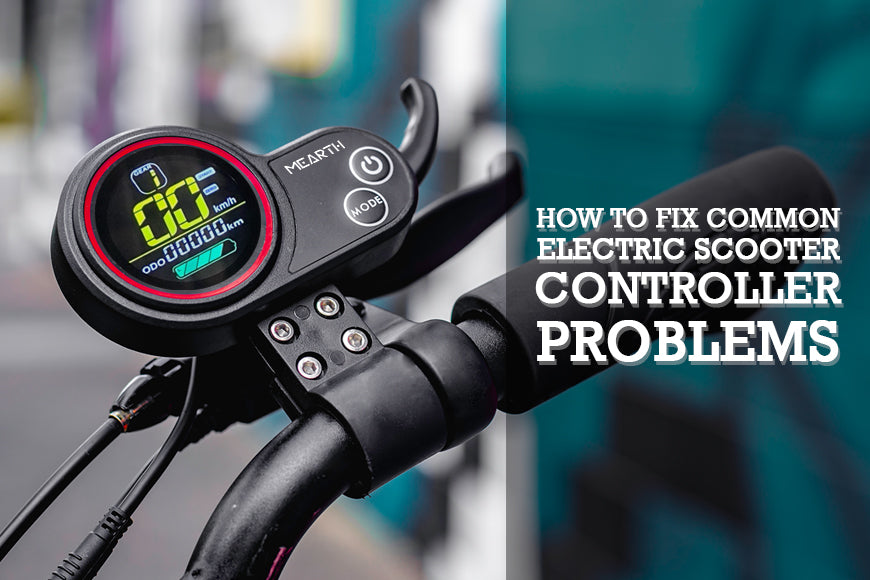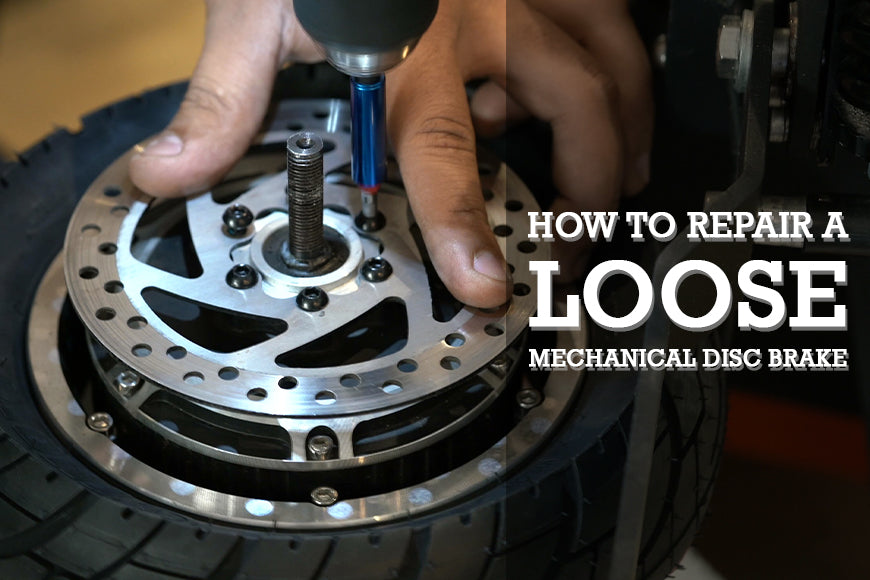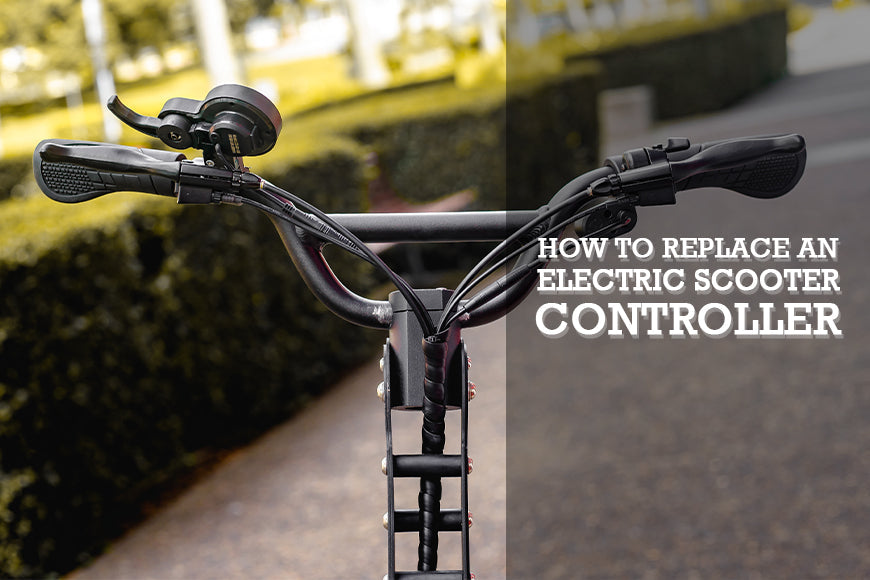
Every electric scooter for adults tends to have controller issues, making it a common repair for electric scooter owners. The controller often malfunctions or breaks down due to dirt, water, or other particles that enter or clog the system. As a result, the circuit or engine will act up or die.
While some electric scooter controller problems are complicated to repair, some issues can be fixed on your own at home. Before you buy an electric scooter online, you should know how much maintenance is needed to repair an e-scooter and keep it in top condition. However, avoid fixing the controller if you are a new electric scooter owner or don’t have any experience with electric scooter repairs.
An inexperienced person may damage the e-scooter further or put themselves in danger. So, if you don’t know what to do, seek the help of a local mechanic instead. Otherwise, here are electric scooter repair guides for different e-scooter controller problems.
What is an Electric Scooter Controller?
Image via Amazon
Before going into the different issues, first, understand the role and function of an electric scooter controller. An electronic speed controller, or simply controller, controls the motor speed of an e-scooter. It controls the current flow from the battery to the motor precisely according to the input from the throttle.
Controllers are measured in amperes (current) and volts (voltage). A controller with a higher current and voltage drives more powerful e-scooters, like the Mearth GTS Series. Moreover, most e-scooters include a single controller, but dual-motor electric scooters usually have two controllers connected to one throttle input. Most controllers also provide regenerative braking.
Common Electric Scooter Controller Problems and Solutions
Check out these common controller issues and how to fix them.
Faulty Electric Scooter Controller
Does your electric scooter shut off while riding? Is it difficult to start your e-scooter? A common controller problem you might encounter is a faulty controller. If your motor acts up, one underlying issue could be your controller. Remember that it is essential to regulate the power within your e-scooter, so it’s best to check it first in case you encounter these kinds of problems.
Solution
Try the following methods to resolve a faulty electric scooter controller:
- Push the e-scooter to help it start
Some electric scooters with single-speed throttles usually need help to start running. First, make sure that the power or key switch is turned on. Then, push the e-scooter forward with one foot and fully engage the throttle. The e-scooter should run smoothly once the throttle engages and the e-scooter reaches decent and consistent speed.
- Inspect the controller
Check the controller by sight, smell, and touch. Open the area where the controller is located, which is usually under the deck. Once it is visible, look for melted or burned wires or electrical components. If you smell a burning plastic smell, a wire or component is likely burned. Replace any burnt wire or component immediately.
Otherwise, check if there are also any loose or damaged wires or wire connectors. Secure each wire tightly to make sure no wire is loose. Be careful when inspecting it as you might get hurt. Wear gloves and an eye shield if possible.
- Test the power switch
If you don’t find anything wrong with the controller, check the other e-scooter components like the power switch or key switch. Does the switch respond well? Does it have a snap-action feel when you turn it on and off? If the switch feels loose or slightly unresponsive, it may be defective. Test the switch with a multimeter to accurately determine if the switch works or not.
- Test the e-scooter throttle
Testing the throttle will show if the throttle and controller are supplying power to each other properly. First, turn on the e-scooter and connect the controller to a multimeter. Test the throttle power of the controller and check the output. The controller works properly if it has an output voltage of 4.3-5 volts. Otherwise, the other parts like the fuse, fuse holder, battery pack, wires, and connectors are faulty.
Next, connect the throttle to the multimeter and test its signal voltage. If the throttle has a zero volt output signal, the throttle, throttle cable, or throttle connector is defective.
- Check the brake lever switch
When you hit the brakes, the brake switch informs the controller to halt the motor. Test the brake switch to see if it is the cause of a faulty controller. If you have an open brake lever switch, disconnect the brake switch wire connector from the controller and see if the e-scooter will run. If it runs while the brake switch is disconnected, the switch is the problem.
If you have a closed brake lever switch, disconnect the brake lever connector from the controller and connect the two terminals. If the e-scooter runs, then the closed brake lever switch is defective.
- Check the circuit breaker or fuse
Circuit breakers are found inside the scooter, while the fuse is usually found outside of the e-scooter or under the footplate. Sometimes, the circuit breaker will reset mechanically but will be unresponsive. On the other hand, fuses burn out sometimes. Check the condition of the circuit breaker and fuse, and test them with a multimeter to see if they are working properly.
-
Examine the motor
Check the motor for any melted or burned wires and wire connectors. If you see burned or melted wires or connectors, it means that the motor overheats. Overheating can cause short circuits and cause the motor to run slowly or to die out. A short-circuited motor can also burn out the speed controller, which can result in overheating. Have the motor repaired or replaced if it burned.
-
Test the components connected to the controller
It is challenging to find the cause of a faulty electric scooter controller since it is connected to multiple parts of the e-scooter. The only way is to test each component connected to it and see which doesn’t work properly. Continue to test the other e-scooter parts with caution if the methods above didn’t work.
A Constantly Running Motor
If you encounter a constantly running motor, it means that the speed controller is defective. Although it can sometimes be due to a faulty or short-circuited throttle, the likely culprit is the controller.
E-scooter controllers use a MOSFET (metal-oxide-semiconductor field-effect transistor) to control motor speed. When it burns out, it locks the power to the “on” position, resulting in the motor running continuously at full speed.
Solution
Try these methods to resolve a motor that runs constantly.
- Test the throttle and speed controller
Determine if the problem is due to the throttle or the controller by disconnecting the throttle from the controller. If the motor stops, the throttle is faulty. Otherwise, it’s the speed controller.
- Replace the controller
If the speed controller is the problem, replace it immediately with a new speed controller. Ideally, get one with the same specs and model as the original to avoid complications. If you don’t know how to replace the controller, bring your e-scooter to a local mechanic instead. Keep yourself safe when it comes to repairs and always seek the help of a professional.
Little to No Acceleration
If you feel that your electric scooter became slower, accelerates slowly, or does not have the power to accelerate, one of the causes may be a defective speed controller.
Solution
-
Check your controller and other e-scooter components
Check for any physical damages or wiring issues with the speed controller. Make sure to also check the fuse if it blew or flipped. Refer to the methods listed under a faulty controller to help you check the other e-scooter components.
-
Bring the e-scooter to a professional
If you don’t find any problem with the controller or if you don’t think you can fix the problem, bring it to a mechanic immediately.
Quick Tips to Care for Your Electric Scooter Controller
Avoid damaging your controller and paying around $30 to over $100 for a brand new electric scooter controller by maintaining your e-scooter properly. Follow these quick tips to care for your controller.
- Don’t ride your electric scooter on rough terrain or steep hills if it’s not designed for it.
- Avoid overloading your e-scooter capacity.
- Avoid getting the electricals wet when cleaning your e-scooter.
- Dust off any dirt or particles within the controller’s area.
Overall, ride your e-scooter properly and clean your e-scooter correctly to avoid damaging your electric scooter controller.
For more electric scooter troubleshooting guides, check out the most common electric scooter issues and how to fix them. Find more electric scooter repair guides on Mearth’s blog page.
Meanwhile, if you need your Mearth electric scooter repaired, you may request a repair via our website. Simply complete and submit the form, and our customer service team will be in touch.




Leave a comment
This site is protected by hCaptcha and the hCaptcha Privacy Policy and Terms of Service apply.